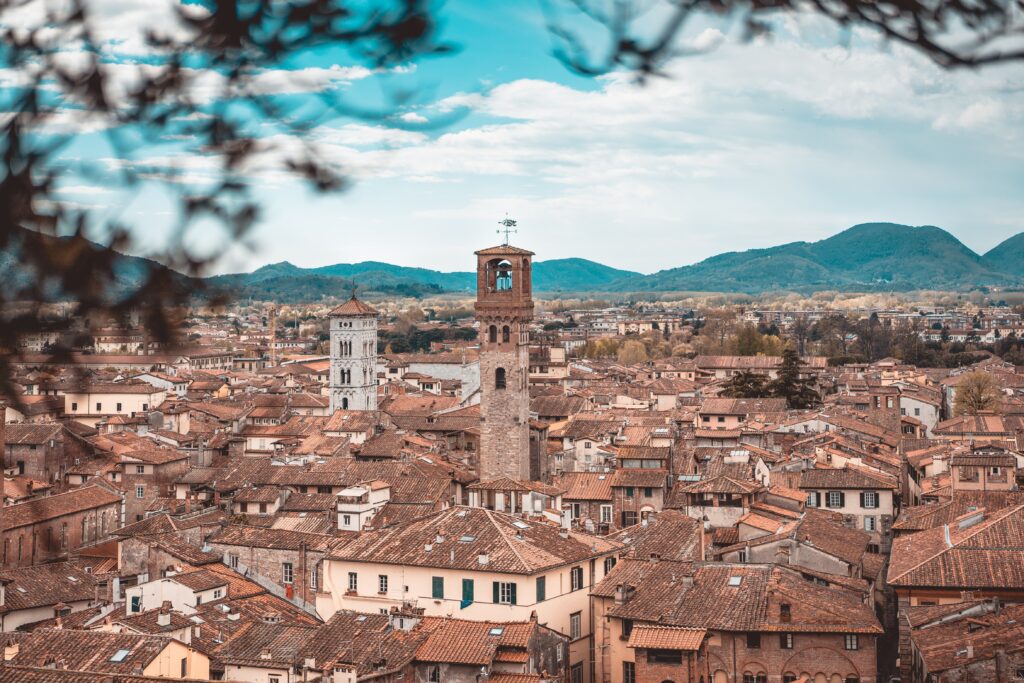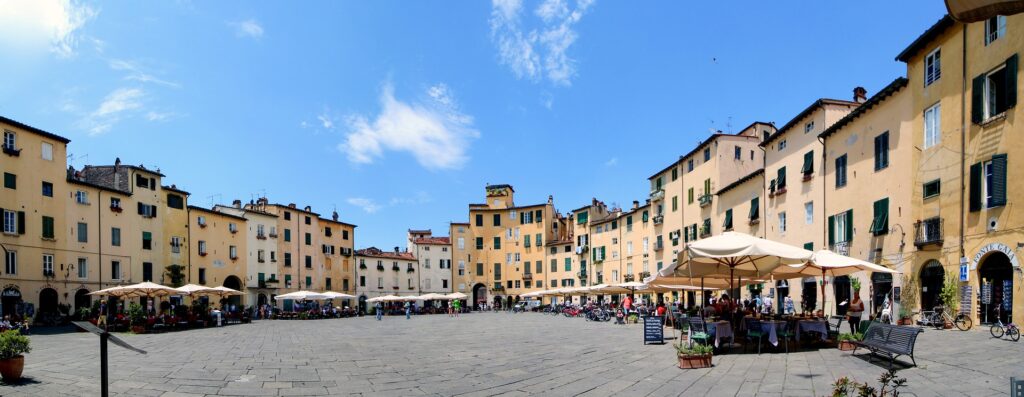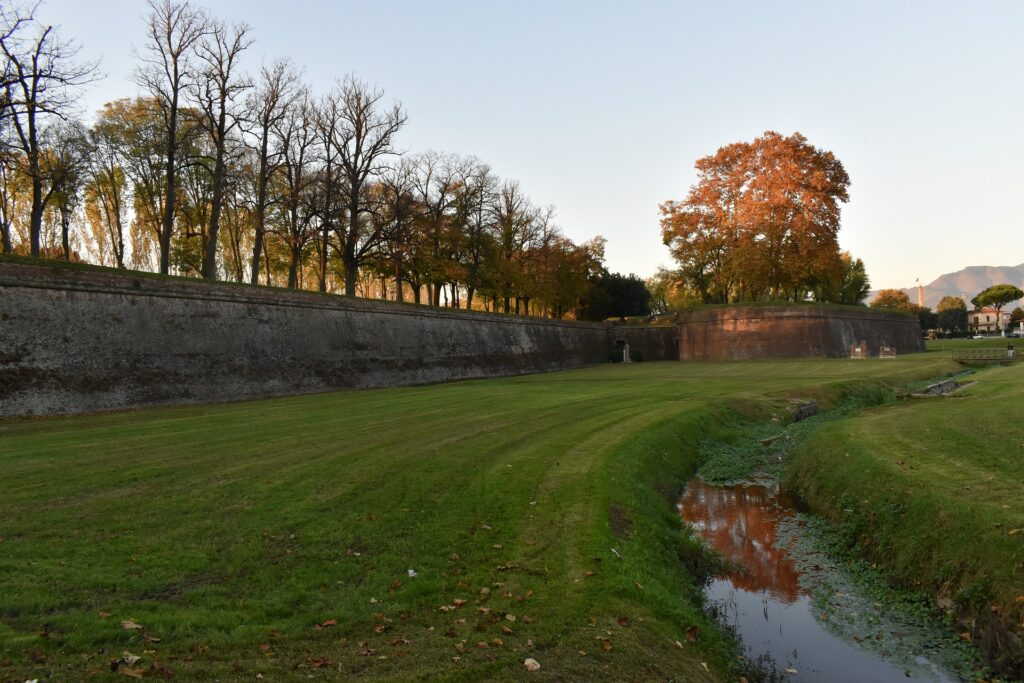City Wall of Lucca
When you think of Lucca, you think of the city wall that encloses the old center of the city since 180 BC. The current city wall was built to defend the city against attacks (1504-1645).
The city wall was only used as a defense line against the waters of the river Serchio when it went far beyond its river.
The wall is well maintained and has a maximum height of 12 meters high and a width of 30 meters. At the top of the city wall is a park and next to this park are cycling and walking paths. Bicycles can be rented there. In total there are 6 beautiful entrance gates to admire. You have a good view over the old center from the city wall.

Torre dei Guinigi
A real eye-catcher of the city is the 44 meter high Torre dei Guinigi. The Guinigi family had the tower built in the 14th century, next to their palace. It was intended as a defense tower and a sign of prosperity. The tower is built in the Romanesque-Gothic style.
You reach the tower by climbing no fewer than 230 steps, which become narrower and smaller. During this climb there are many frescoes that decorate the stairwell, you can see the history of Lucca here. You will also come across decorated windows with three or four windows.
Another surprise awaits when you reach the top. On the roof some trees grow between some flower beds. You have a breath-taking view where the oval Piazza dell’Anfiteatro is certainly recognizable.
San Michele in Foro
Piazza San Michele is centrally located in Lucca’s old town and has been the centerpiece of the city for over 2000 years.
Here trade is conducted, victories are celebrated and public speeches are allowed. Here marble is combined with beneficial decorations. Opposite the entrance of the church is the statue of Francesco Burlamacch, an important politician of the 16th century.
Since 1070, the church of San Michele in Foro has stood on the site of the ancient Roman forum. After 200 years of construction, there was no money left to complete the church. This was because the facade of the church was so impressive and precious, it is also much larger in proportion than the rest of the church.
The many sculptures and twisted arches and columns are a fine example of 11th and 12th century architecture. Many Italians consider this church to be one of the most beautiful in all of Tuscany. The interior is sea worth seeing, countless frescoes, paintings and sculptures.


Piazza dell’Anfiteatro
This square is also known as Piazza del Mercato, an oval beautifully landscaped square. This shape was chosen because in the second century AD a Roman amphitheater stood here and could accommodate 10,000 spectators.
Some of the houses in this square have stones from the original theater and the arch on the left also dates from this period. After the amphitheater, a prison, slaughterhouse and salt storage warehouse stood on this site. This square dates from 1830 and some of the old amphitheater is still 2 meters underground. Here you will find several restaurants, cafes and souvenir shops. All buildings on the square have a different height, giving it an old look.
